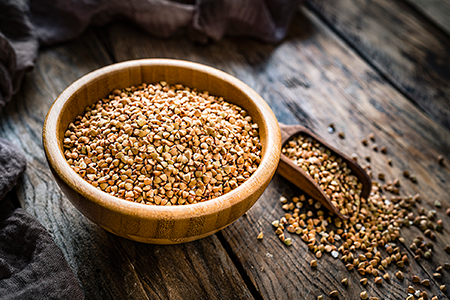The late 20th and early 21st centuries witnessed considerably increased incidences of celiac disease, wheat allergy, and non-celiac gluten sensitivity. These conditions are linked to consumption of common grains, such as wheat, barley, rye, and oats that contain gluten or chemically-related food components. This phenomenon has caused consumers and health care practitioners alike to consider other plant foods that contain no gluten yet may be ground into flour and employed similarly in food preparation.
The benefits of choosing gluten-free flours, however, extends far beyond the exclusion of grain constituents that cause disease in susceptible individuals. These “alternative” flours represent plants and plant families that were more commonly eaten in ancient times, and are often exceptionally endowed with phytonutrients that are now touted for contributing to healthy aging and immunometabolic function.
The plants analyzed consisted of the following:
● Cereals: 6 types of rice (including pigmented and wild varieties), 2 types of sorghum, and teff
● Pseudocereals: amaranth, buckwheat, and 2 types of quinoa
● Legumes: black chickpeas, red adzuki beans, black beans, kidney beans, and red lentils
Commercial flours made from these plants were tested for total phenolic contents (expressed as gallic acid equivalents, or GAE), macronutrients, total anthocyanins (expressed as cyanidin-3-glucoside equivalents, or CGE), oxygen radical absorbance/antioxidant capacity (ORAC; expressed at Trolox equivalents or TE), and ferric reducing antioxidant power (FRAP; expressed as GAE).
Gluten-Free Flours Reveal Impressive Phytonutrient and Antioxidant Payloads

KEY TAKEAWAY:
According to research cited in this study, “buckwheat can be considered a great source of some phenolic classes, such as flavonoids and phenolic acids.”
Understanding the phytonutrient and macronutrient composition of ancient and pigmented pseudocereals, cereals, and legumes will enable development of gluten-free foods with improved nutritional and health value for those with related allergies or sensitivities. Buckwheat, violet rice, and red lentil flours may be worthy of particular consideration, in this light.

